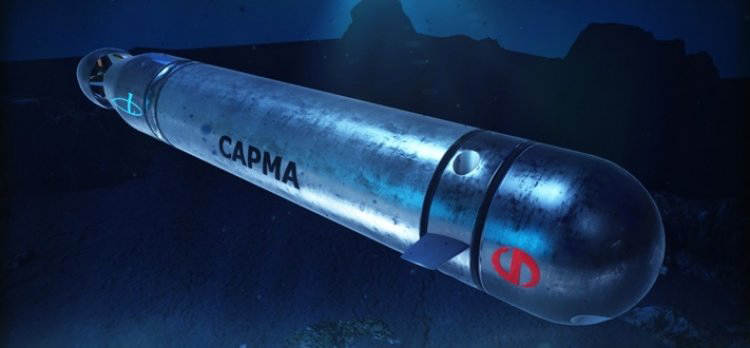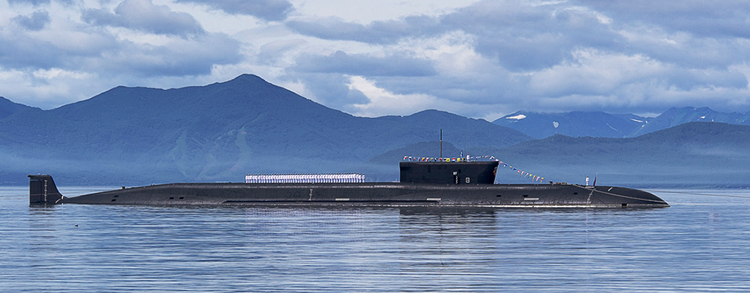INDIAN ARMED FORCES CHIEFS ON OUR RELENTLESS AND FOCUSED PUBLISHING EFFORTS

The insightful articles, inspiring narrations and analytical perspectives presented by the Editorial Team, establish an alluring connect with the reader. My compliments and best wishes to SP Guide Publications.

"Over the past 60 years, the growth of SP Guide Publications has mirrored the rising stature of Indian Navy. Its well-researched and informative magazines on Defence and Aerospace sector have served to shape an educated opinion of our military personnel, policy makers and the public alike. I wish SP's Publication team continued success, fair winds and following seas in all future endeavour!"

Since, its inception in 1964, SP Guide Publications has consistently demonstrated commitment to high-quality journalism in the aerospace and defence sectors, earning a well-deserved reputation as Asia's largest media house in this domain. I wish SP Guide Publications continued success in its pursuit of excellence.
- Operation Sindoor: Resolute yet Restrained
- India’s Operation Sindoor Sends a Clear Message to Terror and the World – ‘ZERO TOLERANCE’
- Japan and India set forth a defence cooperation consultancy framework, talks on tank and jet engines
- Terrorist Attack in Pahalgam in Kashmir: Unfolding a long surgical war against PAK
- Lt General Pratik Sharma takes over Command of Indian Army's Northern Command
New Russian Autonomous Underwater Drones
Autonomous Unmanned Vehicles (AUVs) can be used for underwater survey missions such as detecting and mapping submerged wrecks, rocks, and obstructions that can be a hazard to navigation for commercial and recreational vessels
 |
The Author is Former Director General of Information Systems and A Special Forces Veteran, Indian Army |

At the INNOPROM-2021 industrial show at Yekaterinbur, Russia in the Urals from July 5-8, 2021, the Almaz-Antey Group for the first time showcased a mockup of the ‘Sarma’ autonomous unmanned vehicle (AUV) produced by the Nizhny Novgorod ‘70th Anniversary of the Victory’ plant as part of the project of the Advanced Research Fund.
AUVs and remotely operated vehicle (ROVs) are different class of the unmanned underwater vehicle (UUV) family. AUVs can respond to their environment and make decisions on the fly without a human operator while ROVs cannot. Gliders could be an AUV depending on their control system; an XLUUV is just a big UUV though it could also be an AUV. AUVs can be used for underwater survey missions such as detecting and mapping submerged wrecks, rocks, and obstructions that can be a hazard to navigation for commercial and recreational vessels.
Sarma is equipped to undertake a variety of tasks submerged in the oceans and it will be able to work autonomously for a period of three months
Russian media has said the Sarma submersible will be able to carry out lengthy explorations in the depths of all oceans including under the ice, transport various cargoes, provide maintenance for underwater structures and utilities, control underwater oil and gas equipment, and search for sunken objects. Developed by the Lazurit Central Design Bureau, Sarma’s modular design is made of the latest materials, and features a lot of new technological solutions in the field of creating large-displacement autonomous underwater robotic systems. It is outfitted with precision navigation equipment, a communications system, and a broad range of tools to cope with various tasks under water.
While Sarma is equipped to undertake a variety of tasks submerged in the oceans, it is significant to note that it will be able to work autonomously for a period of three months. This is especially important for working under iced ocean in the Arctic region. Unmanned underwater and aerial robots are to be organic to Russia’s future ships; which all navies including the Indian Navy would be planning for.

Earlier in April 2021, Russian state media announced that Russia’s ‘Belgorod’ submarine carrying ‘Poseidon’ nuclear armed drones will be inducted in the Russian Navy’s Pacific Fleet after passing a series of tests. Russia’s Sevmash Shipyard began constructing the Belgorod in December 2012, and it was scheduled to be commissioned in September 2022 after passing sea trials in June 2021 but was delayed due to the pandemic. The Poseidon, earlier known by the Russian codename of Status-6, is an autonomous, nuclear-powered, and nuclear-armed unmanned underwater vehicle capable of delivering both conventional and nuclear payloads being development by the Rubin Design Bureau.
The Poseidon is an autonomous, nuclear-powered, and nuclear-armed unmanned underwater vehicle capable of delivering both conventional and nuclear payloads
Poseidon is one of the six Russian strategic weapons announced by Russian President Vladimir Putin on March 1, 2018, the others being a nuclear powered cruise missile with unlimited range, the nuclear-tipped ‘Avangard’ hypersonic boost-glide vehicle, RS-28 ‘Sarmat’ intercontinental ballistic missile (ICBM), and hypersonic missiles and lasers including the ‘Kinzhal’ air-launched hypersonic missile.
Putin had said in his above address that the Poseidon underwater drone would be difficult to detect and intercept because of its speed and size and would cause massive damage to coastal targets after the underwater launch. The development of Poseidon includes use of stealth technology to elude acoustic tracking devices; silent running strategy like other submarines. Its main stealth feature is its very low speed before it reaches the target area. Its high-speed mode activates upon reaching a short finish range (2–3 km), when the probability of detection of the drone is considerably higher. It could travel for weeks toward enemy port cities, reaching high-speed only in the final stage. However, in response to Putin’s address, the then US Defence Secretary James Mattis had stated that the Poseidon does not change the strategic balance at all since Russia already has the capability to hit US port cities with missiles.
‘Belgorod’ will be the longest submarine in the world once commissioned. With a length of 184 metre it will be longer by nine metre of the longest Typhoon-class submarine currently in service.
With a crew capacity of 100 sailors, ‘Belgorod’ will be the longest submarine in the world once commissioned. With a length of 184 metre it will be longer by nine metre of the longest Typhoon-class submarine currently in service. With a displacement of 10,000 tonnes, it can travel up to speeds of 30-32 knots (55-59 km/h). The maximum immersion depth of Belgorod is 500 meters (1,640 feet) and it can run autonomously for up to 120 days.
The Belgorod is designed to carry six autonomous Poseidon drones, each having a range of 1,000 km carrying a nuclear warhead with a yield of up to 100 megatonnes to most parts of the world while remaining immersed 1,000 meters beneath the surface. According to foreign media reports, Russia plans to deploy 30 x Poseidon drones in a new line of submarines. The first of four ‘Khabarovsk’ class submarines is expected to be commissioned in 2023 with the second ‘Ulyanovsk’ to follow in 2027.





